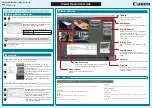
System Utilities
Page 203
Section 16. System Utilities
The configuration file structure involves the following configuration files:
•
Startup Configuration File
— Contains the commands required to reconfigure the device to the same
settings as when the device is powered down or rebooted. The Startup file is created by copying the
configuration commands from the Running Configuration file or the Backup Configuration file.
•
Running Configuration File
— Contains all configuration file commands, as well as all commands entered
during the current session. After the device is powered down or rebooted, all commands stored in the
Running Configuration file are lost. During the startup process, all commands in the Startup file are copied to
the Running Configuration File and applied to the device. During the session, all new commands entered are
added to the commands existing in the Running Configuration file. Commands are not overwritten. To update
the Startup file, before powering down the device, the Running Configuration file must be copied to the
Startup Configuration file. The next time the device is restarted, the commands are copied back into the
Running Configuration file from the Startup Configuration file.
•
Backup Configuration Files
— Contains a backup copy of the device configuration. Up to five backup
configuration files can be saved on the device, with user configured names. These files are generated when
the user copies the Running Configuration file or the Startup Configuration file to a user-named file. The
contents of the backup configuration files can be copied to either the Running Configuration or the Startup
Configuration files.
•
Image Files
— Software upgrades are used when a new version file is downloaded. The file is checked for
the right format, and that it is complete. After a successful download, the new version is marked, and is used
after the device is reset.
There are two types of files, firmware files and configuration files. The firmware files manage the device, while the
configuration files configure the device for transmissions. Configuration files can be uploaded and downloaded to
the device.
System files are uploaded or downloaded using the
Trivial File Transfer Protocol
(TFTP). TFTP utilizes the
User
Data Protocol
(UDP) without security features.
Note
Only one type of download or upload can be performed at any one time. During upload or download, no
user configuration can be performed.
File maintenance includes configuration file management and device access, and is described in the following
topics:
•
Restoring the Default Configuration
•
Defining TFTP File Uploads and Downloads
•
Viewing Integrated Cable Tests
•
Viewing Optical Transceivers
•
Resetting the Device
















































